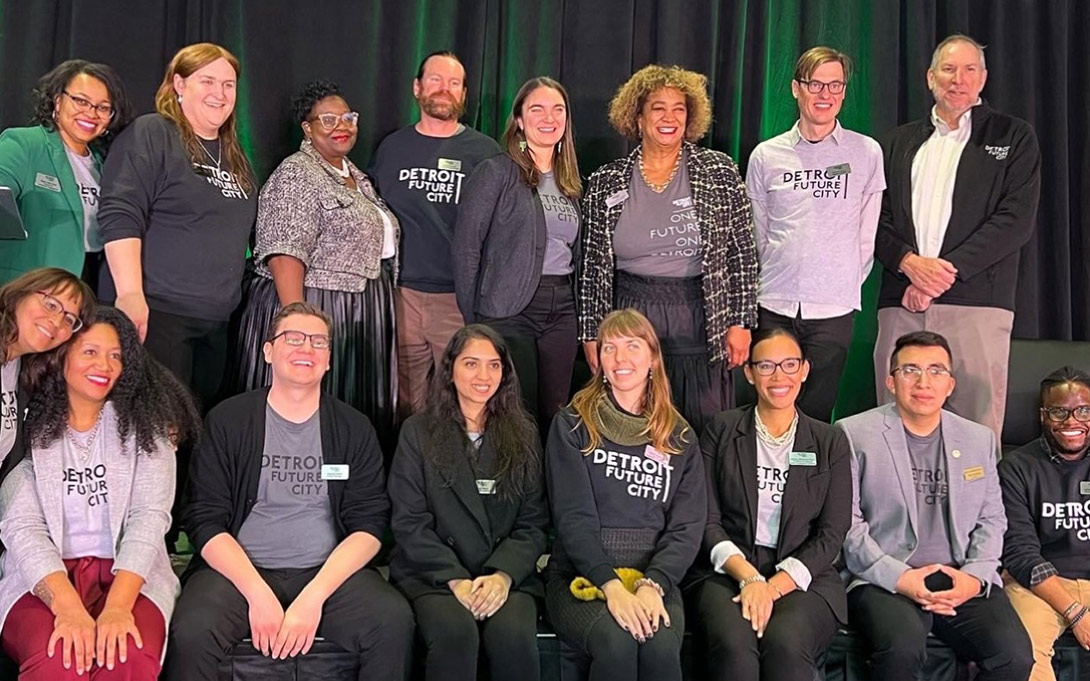
Inheriting a home is one of the main ways that middle- and low-income families preserve wealth across generations. Yet in many cases, family-owned properties are passed on without formal legal proceedings to prove ownership, becoming what are referred to as “heir properties.”
Juan Sandoval (MPP ‘24) researched the topic of heir properties through his Ford School internship with Detroit Future City, a non-profit think tank and advocacy organization. His report, “Keeping Your Family Home: Addressing the Challenges of Inherited Properties in Detroit," provides a deep dive into the challenges of transferring homes across generations.
“A lot of people don’t have the resources or knowledge to navigate the legal system,” Sandoval explained. “They may think they own a home because their relative told them, ‘After I die, this will be your home.’ A lot of the time, people end up living in these homes without ever realizing they don’t legally own them.”
This can create problems if the home is involved in a natural disaster, because homeowners typically have to prove ownership to receive disaster relief funds. In addition, residents of heir properties aren’t able to leverage the equity in their homes, Sandoval explained. And often, heir properties are left vacant, decreasing tax values and providing opportunities for crime.
In Detroit, there are more than 5,550 heir properties, meaning the legal, recorded owners of the properties are deceased. Together, these properties are worth more than $268 million, according to Sandoval’s report.
Throughout Detroit, heir properties are more likely to be located in neighborhoods with higher black populations. For Sandoval, addressing this issue is a matter of racial equity.
“The most important thing for me is to shed light on this issue,” he said. “There are millions of dollars of intergenerational wealth that can be saved, which is one tiny step toward some form of equity.”
There are two ways that properties can become heir properties. If a homeowner dies and there is no will or estate plan, state law determines which surviving heirs receive a share of the property. This often results in multiple heirs owning the property. If this happens across several generations, more heirs are added, which leads the title to become “tangled,” which means its legal ownership becomes ambiguous.
A home can also become an heir property when it is included in a will that is not administered through probate court, a necessary step that allows the new owner to obtain a clear title. After clearing probate court, the new owners must file a deed to formally transfer the ownership of the home.
Sandoval’s report highlights three main challenges in the city of Detroit. The first is identifying the current heir properties in the city. The second is finding funding to help people living in heir properties to legally obtain ownership. And third is promoting education and outreach to help prevent more heir properties in the future.
“We need to teach people to talk about the difficult subject of death and inheritance in the first place,” he said. “For so many people, these were childhood homes. If they lose the home, they are not only losing wealth, but a piece of their childhood.”
Sandoval says he learned a lot through working on this report, including project management skills, how to organize and run focus groups, and how to communicate about complicated topics. He has continued working with Detroit Future City in a consulting role, and is considering staying in Detroit when he graduates in May.
“So much of Detroit reminds me of my home city, Chicago,” he said. “This experience has inspired me to look for work in Detroit because Detroiters really love their city.”
Written by Sheri Hall